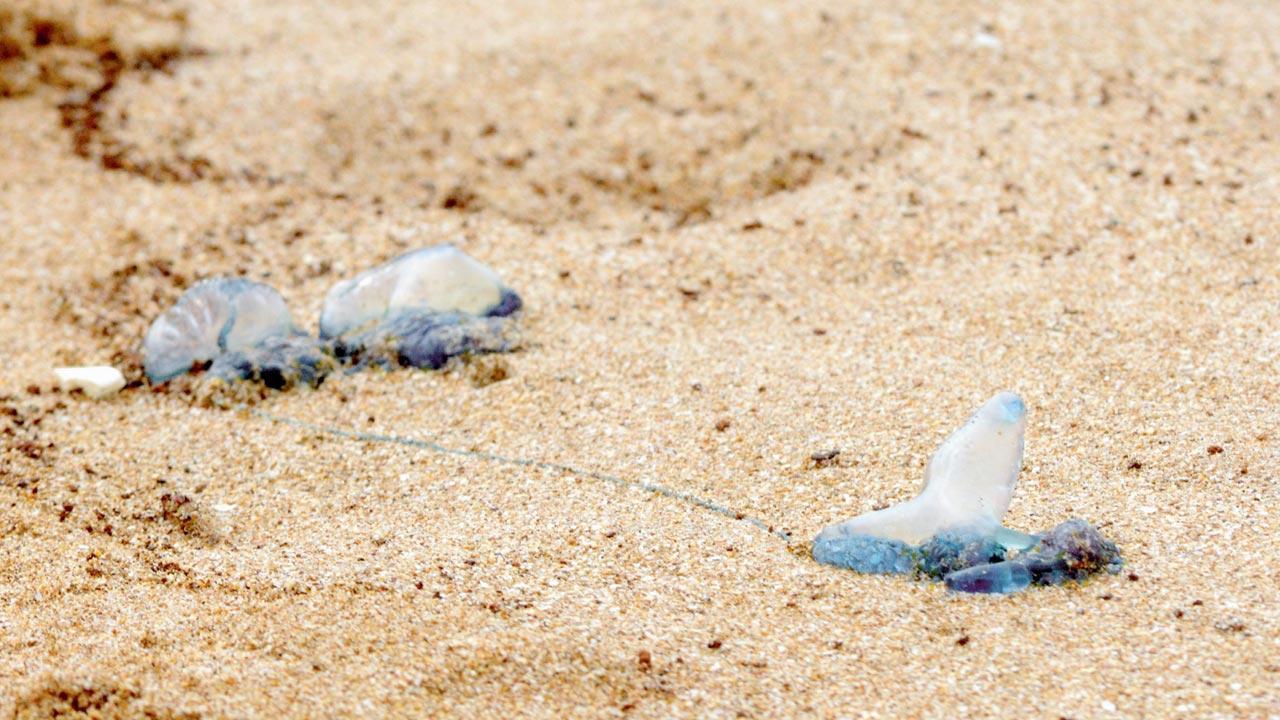This venomous marine creature, an annual sight at city beaches, can cause irritation, inflammation and rash if touched

Bluebottle jellyfish spotted at Juhu beach, Andheri on August 1, last year. Pic/Satej Shinde
The venomous but beautiful Portuguese man o’ war or bluebottle jellyfish was recently sighted at Girgaon Chowpatty. Experts working in the field of marine conservation feel that those visiting city beaches need to take precautions in order to avoid getting stung by the jellyfish.
ADVERTISEMENT
The Mangrove Foundation on Wednesday tweeted, “It is an annual phenomenon for the Portuguese man o’ war/bluebottles to wash up on the shores during this season. To educate people, Mangrove Cell, Mangrove Foundation and Coastal Conservation Foundation are putting up signboards at the Girgaon, Juhu and Versova beaches.”
Also read: Mumbai gets second viewing deck at Girgaon chowpatty
There has been a strong onshore wind for past few days and this might be one of the reasons that Portuguese man o’ war was seen at Girgaon beach. Earlier, a marine enthusiast had spotted a bluebottle jellyfish at Girgaon beach, the video of which had gone viral on social media.
People who visit the beach need to be careful to not accidentally step on or touch bluebottle jellyfish which swarm along the beaches as it can cause irritation, inflammation and rashes. These marine animals are regular visitors at city beaches during monsoon months and there have been instances of people getting stung by them.
Experts said that in case of contact, one should wash the affected area with warm or fresh water and rush to a doctor. If stung, a person suffers in pain for more than 1-3 hours and if the venom reaches the lymph node, they can cause severe problems like swelling in the throat, cardiac distress and breathing problems.
1-3
Hours that the pain can last if stung
What is bluebottle jellyfish?
The bluebottle jellyfish is an Atlantic Portuguese marine creature that has a bubble-like body and 18 to 20-cm long tentacles. As part of their self-defence, they usually fling their tentacles at whatever approaches them. It is called Portuguese man o’ war because of its appearance like the shape of a Portuguese warrior’s hat.
 Subscribe today by clicking the link and stay updated with the latest news!" Click here!
Subscribe today by clicking the link and stay updated with the latest news!" Click here!








